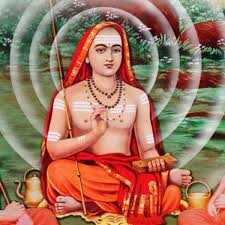Self-Realization (Atma-Anubhava): Some Preliminaries
By the mysterious operation of the sheer Divine Grace,[1] one comes in contact with the non-dual Vedānta teachings and a realized teacher.
Vedānta is not an abstract philosophy but a concrete science of Reality—a highly practical methodology to cognize one’s true nature in one’s own anubhava, experience, here and now.
- The starting point of Vedānta is the ability to discriminate (viveka) between what is intrinsic to us and what is adventitious. Ādi Śaṅkara calls it nityānitya vastu viveka: Discernment of the Real and unreal.
- According to Vedānta, the fundamental metaphysical error is taking oneself to be a limited body-mind-senses complex. Vedānta categorically asserts,[2] and proves in our own experience, that we are not the limited, mortal beings that we take our self to be.
- Before one takes up the study of Vedānta, one should learn the art and science of taking a correct standpoint about one’s true nature. What is the correct standpoint? Just this: I am the unchanging Witness Principle which is Seer of the proceedings of the psychosomatic apparatus (body-mind-senses complex).
- One should listen to the teachings of Vedānta from the standpoint of this unchanging Witness principle. As one is listening, one should try to “cognize” the truth of the teachings within one self, right then and there.
- The most important qualification to learn Vedānta is मुमुक्षुत्वम् mumukshutvam—the intense longing for mokṣa, liberation (from the limitations).[3]
We indeed always have “aparoksha” — im-mediate” anubhava of the ātmā, the Self. It is experienced as “presence-awareness” or “being-knowingness” Sat-Chit or Chit-Sat, or “asti-bhāti,” as Mahatama Nishchal Das says in the opening of Vriti Prabhakara (वृत्ति प्रभाकर). Everything else is experienced as proksha, through the prism of the Self, the Witnessing Consciousness.
The experience of this “Witnessing Consciousness” can never be lost. As Sri Shankara points out in the BSB 3.2.7: At no time has the jiva not been one with Brahman: न कदाचिज्जीवस्य ब्रह्मणा सम्पत्तिर्नास्ति. Once one takes one’s standpoint in this thought-position, 90% of the journey is over. Taking a correct standpoint is the key to realizing the Self.
Kindly please understand that the words, seeker, journey, ātma-anubhava, bandha, mokṣa, etc., are all used in the “apparent” sense only; in the “as though” sense. From the Absolute standpoint, there is no bondage; hence there is no liberation. This is the thought-position of Sri Gaudapadācārya. The story of the tenth man as referenced in Bṛhadāraṇyka Upaniṣad 1.4.7 brings out his point splendidly:
Ten monks crossed a river, and one of them counted their number to see if everyone had safely crossed. To their dismay, one was found missing. Then everyone took their turn at counting, but the result was the same. So they began to lament, when a kind passer-by inquired what it was all about. On being told what had happened, he readily understood the situation, and asked one of them to count again. When he stopped at nine, the passer-by said to him, “You are the tenth man.” This he repeated with the rest of them. Then they saw their mistake and went away happy. Everyone had left himself out in the counting![4]
Grace Notes: When the passer-by pointed out “You are the tenth” and the tenth man realized it so, this is the direct knowledge (aparoksha jnana) of the tenth.
Strictly speaking, we cannot know our self because we are the self. The seeker is the sought! We are the knowing self—the pure awareness—the subject; and the subject, by definition, can never become the object of knowledge. Like the tenth man in the story, gaining the essential self means realizing our mistake of self-forgetfulness or self-ignorance. The self, like the tenth man in the story, appears initially to be not known through ignorance, but subsequently becomes known through knowledge. From an absolute standpoint, again—like the tenth man in the story—the essential self was never lost to begin with and is ever-attained. Attainment of the ever-attained self, therefore, essentially means letting go of our false notion about what we take ourselves to be, that is, a limited body-mind-intellect complex subject to mortality and unhappiness. It is about chipping away, so to speak, the fabricated edifice of the false “I,” the imposter self. This special understanding requires courage—the discernment and audacity to reclaim our true heritage. We just have to know ourselves as we truly are. And this requires knowledge, not action.
True Self-Knowledge, Ātma-Jñāna, is the knowledge that we are nothing else but the Eternal Imperishable Reality (Brahman). No one can give that knowledge to us nor can it ever be taken away. At best, all teachers and teachings can do is to remove the veil of ignorance which prevents that jñāna from shining forth. It is mostly a subtractive process not additive. When we see the false as false, the truth manifests Itself spontaneously and effortlessly. Self-inquiry based on śravana (listening), manana (reflection), and nididhyāsana (deep contemplation) is the only means to eradicating the self-ignorance.
To be continued…
[1] ईश्वरानुग्रहादेव पुंसाम् अद्वैत-वासना: īśvarānugrahād-eva puṁsām Advaita-vāsana: Through the utmost grace of the Lord, the desire for non-duality arises in a person. [Avadhūta Gītā 1.1]
[2] शृण्वन्तु विश्वे अमृतस्य पुत्रा śṛṇvantu viśve amṛtasya putrā: ‘Hearken you all, the sons of immortality!’ [Śvetāśvataropaniṣad 2.5]
[3] यमेवैष वृणुते तेन लभ्यः
तस्यैष आत्मा विवृणुते तनू{म्+} स्वाम्
yamevaiṣa vṛṇute tena labhyaḥ
tasyaiṣa ātmā vivṛṇute tanū{m+} svām [Kaṭha Upaniṣad 1.2.23 & Muṇḍaka Upaniṣad 3.2.3]
Only by the one who seeks to know ONLY the Self, the Self reveals Its own nature [as his own self].” यमेवैष वृणुते is begging for it. Only he who begs for the Self, i.e., he who has an intense longing for It, It reveals Itself.
[4] See Swami Madhavananda, trans., Bṛhadāraṇyka Upaniṣad: With the Commentary of Shankaracharya, 11th impression. (Kolkata: Advaita Ashrama, 2008), 83-84.


Recent Comments